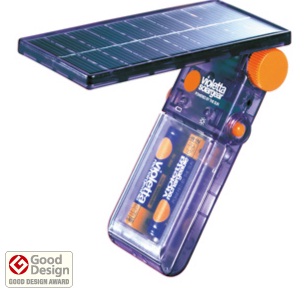by Leigh Wellsview
Japan is one of the world’s biggest cell-phone markets, with over 100 million cell phone subscribers as of January 2007. That’s a whopping 78 percent of the population walking around with a cell phone! Cell phones are also said to be one of the electronics goods with the fastest rate of turnover—especially true in a fad-driven country like Japan! Unfortunately, that turnover isn’t good for the environment—not only do the millions of phones discarded each year ad bulk to landfills (and gomi incinerators), they also leech toxic chemicals into the ground and into the air if they are burnt.
However, thanks to NEC (NTT DoCoMo), its now possible to toss an old model without feeling guilty for adding to the garbage problem with yet more un biodegradable waste—provided you have the new NEC N70i, the first biodegradable cell phone to hit the shelves. Although now available elsewhere, its 2005 world debut occurred right here in Japan. Wade from potatoes, corn, and kenaf (an African hibiscus), the phone will simply rot and decompose when you are finished with it and send it to the compost bin. NEC also claims that making its N70i requires less C02 than producing the average phone.
Taking the biodegradable thing one step further is Motorola’s phone, still in the concept stage, which not only disintegrates, but also hides a tiny sunflower seed in the back of its case—water your old phone and watch a gorgeous plant emerge!
For another phone-plant combination, check out the super-cute, only-in-Japan cellphone strap from Strap-ya, which houses a tiny plant under a miniature bell jar. Simply repot your plant when it gets too big to be a part of the conversation.
Already have a phone but looking for a more environmentally sound way to charge your phone (and other electronics?). Tokyo-based Violetta Solar Gear has created a pocket-based solar charging system called Violetta Solargear VS01 (pictured above). Winner of a 2001/2002 Good Design Award, the ¥2,500 product provides energy to charge AA and AAA batteries, as well as small devices such as cell phones and PDAs, digital cameras, and presumably anything else that uses DC4V-6V battery. www.violetta.com/english/index_e.html









